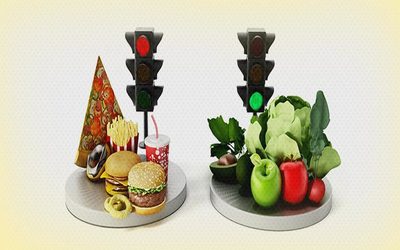Fat is one of the three main macronutrients, along with carbohydrate and protein. Biochemists refer to fat as lipid and
[the_ad id=”6155″] it is solid at room temperature. However, oil is liquid at room temperature. All fats and oils are made up of fatty acids. It is the individual fatty acids that make all the difference to our health. This makes a good case for understanding good and bad fats.
Visceral fat
Excess body fat is a health problem, which you should not ignore. Your waist circumference helps experts predict the presence of visceral fat in your body. Visceral fat surrounds your liver, pancreas, and intestines. It is metabolically active and dangerous for your health. Presence of this fat is the most vital indication that you need to lose weight.
Why is visceral fat bad?
It could lead to any/all of the following lifestyle problems:
- Heart disease
- High blood pressure
- Knee pain
- Acne
- Hair loss
- Type 2 diabetes
- PCOD
- Skin infection
- Breathing difficulty
- Infertility
- Sleep disturbance
- Certain cancers
- Gastro intestinal problems
- Low immunity
Subcutaneous fat
Subcutaneous fat is found directly under the skin. Subcutaneous fat in the thighs and buttocks might not be as bad and may have some potential benefits. It may not cause as many problems as other types of fat such as visceral fat. However, subcutaneous fat cells on the belly could be dangerous if ignored completely.
Good & bad fats
Good fats, also referred to as monounsaturated fats and polyunsaturated fat, are considered more heart-healthy and should be included in your diet plan. This type of fat is present in nuts (almonds, cashews and peanuts), vegetable oils (olive, canola and peanut), peanut butter, avocado, salmon, sardines, trout and tofu.
Oils extracted from olives, groundnuts, sesame seeds, rapeseed, canola, and flaxseed contain a good quantity of Mono-unsaturated Fatty Acids (MUFA). MUFA protects the cardiovascular system. Olive oil is the most popular choice as a heart-friendly oil since it is the richest in MUFA. It helps reduce LDL levels (bad cholesterol).
Bad fats are of two types – saturated and trans-fat. This type of fat raises the total blood cholesterol and the LDL ‘bad cholesterol’ levels. Saturated fats are found in fatty cuts of pork and lamb, high-fat dairy foods such as whole milk, cheese, butter, ice cream, baked foods, processed snacks, fried foods and coconut oil.
Low HDL and high cholesterol
Low HDL values tend to pose a bigger threat to the heart than high cholesterol levels. The only way you could boost your HDL levels is by exercising and consuming more Omega-3 rich food. Moreover, switching over to oils extracted from olives, groundnuts, flaxseeds, canola mustard, and reducing the consumption of oils rich in PUFA would be helpful.
Lifestyle and heart diseases
Heart diseases have a direct proportionality with our lifestyle. Therefore, good and healthy lifestyle changes that we can make as early as possible in our lives will likely help save us from cardiovascular tragedies.
Why is belly fat dangerous?
If you have heard that belly fat is dangerous because it could lead to numerous health issues, you are absolutely right. Presence of excess belly fat is the biggest indication that you have visceral fat. Visceral fat is extremely dangerous and can affect your health even before you know it. Therefore, the best way out is to get rid of the belly fat. This will help you stay healthy and fit.
Concerns with belly fat
The crucial aspect of belly fat that you need to know is that it is not just limited to the additional layer of padding right below the skin, also known as subcutaneous fat. This fat includes visceral fat, a very dangerous form of fat that resides deep within your abdomen and surrounds all your internal organs.
A large amount of belly fat increases the chances of you developing dangerous health issues such as:
- High cholesterol
- High blood pressure
- Indigestion and acidity
- Cardiovascular diseases
- Type 2 diabetes
Source:

